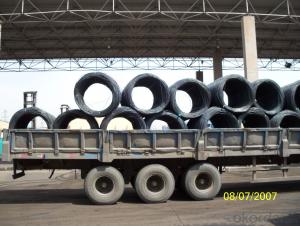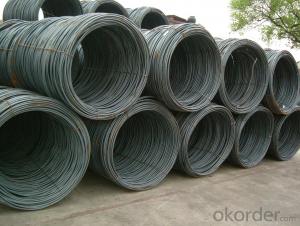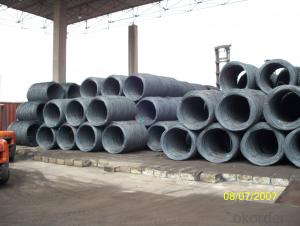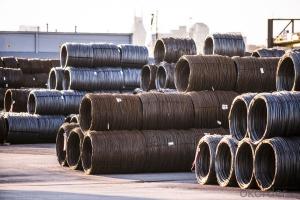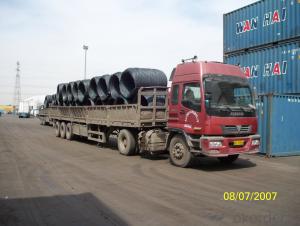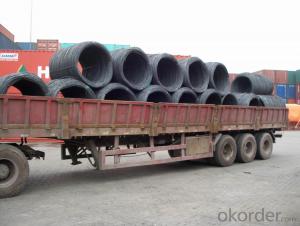SAE1006Cr Carbon Steel Wire Rod 7.5mm for Welding
- Loading Port:
- Shanghai
- Payment Terms:
- TT OR LC
- Min Order Qty:
- 100 m.t
- Supply Capability:
- 30000 m.t/month
OKorder Service Pledge
OKorder Financial Service
You Might Also Like
Item specifice
Description of SAE1006Cr Carbon Steel Wire Rod 7.5mm for Welding:
OKorder is offering Color Coated Steel Coil Prepainted Steel Coil at great prices with worldwide shipping. Our supplier is a world-class manufacturer of steel, with our products utilized the world over. OKorder annually supplies products to European, North American and Asian markets. We provide quotations within 24 hours of receiving an inquiry and guarantee competitive prices.
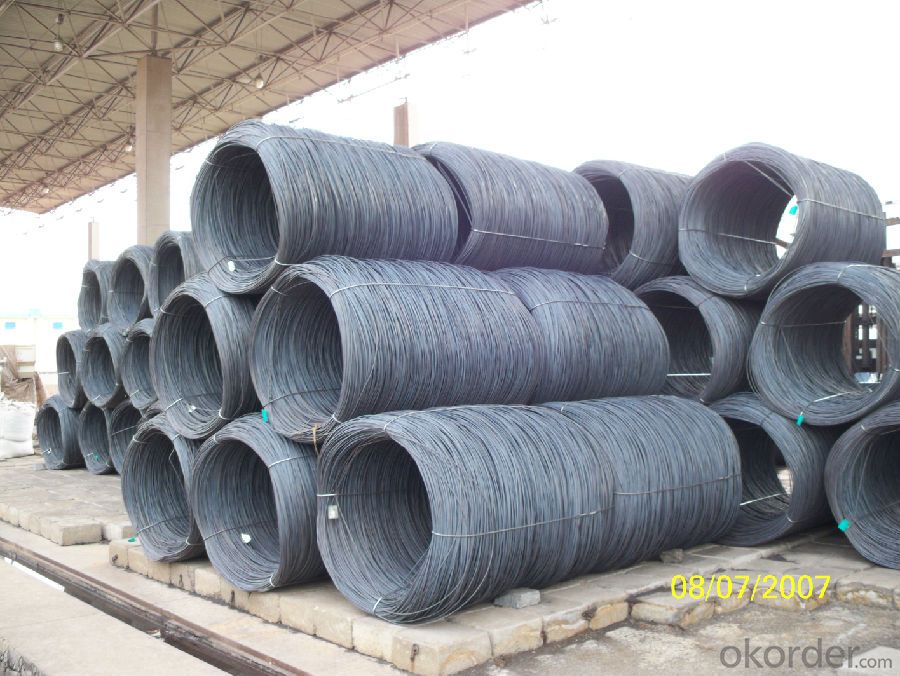
Applications of SAE1006Cr Carbon Steel Wire Rod 7.5mm for Welding:
Color Coated Steel Coil Prepainted Steel Coil are ideal for structural applications and are widely used in the construction of buildings and bridges, and the manufacturing, petrochemical, and transportation industries.
Main Product Features of SAE1006Cr Carbon Steel Wire Rod 7.5mm for Welding:
· Premium quality
· Prompt delivery & seaworthy packing (30 days after receiving deposit)
· Corrosion resistance
· Can be recycled and reused
· Mill test certification
· Professional Service
· Competitive pricing
Specifications of SAE1006Cr Carbon Steel Wire Rod 7.5mm for Welding:
PPGI:
1, Introduction: Color coated steel coils(sheets), i. E. PPGI, also called prepainted steel coils(sheets), are made of galvanized steel coils(sheets) with polymer coatings as surface. It's a new enclosure material and building board with characteristics of light-weighted, heat preserved&insulated, easily installed with bright colors.
2, Production Process: Pretreatment(Degreasing)_Drying_Chromating_Paint Basic Oil_Cooling_Drying_Color Coating_Cooling_Film-covering_Rolling Up
3, Characteristics:
Good at corrosion resistence. Besides zinc coating of the basic plate of galvanized steel sheet, the color coating as the surface has double lifetime to ensure better anticorrosion effect.
With excellent cold bending molded manufacturablity, PPGI products can be processed or directly used as final product. As being light-weighted and conveniently transported, they're widly used to replace wood to save energy.
4.There're thousands of colors can be chosen as per different application. Any color plays well in decoration.
No pollution with high recycling rate, PPGI coils and sheets are strongly recommended as enviroment-friendly products by the government.
5, eye bands and 4 circumferential bands in steel, galvanized metal fluted rings on inner and outer edges, galvanized.
| commodity | SAE1006Cr Carbon Steel Wire Rod 7.5mm for Welding |
| Techinical Standard: | JIS G3302-1998, EN10142/10137, ASTM A755 |
| grade | Q195,Q215,Q235,SAE1006,SAE1008 SAE1006Cr |
| Types: | Mesh welding |
| Base metal | galvanized, galvalume, cold rolled steel |
| Thickness | 0.14-1.0mm(0.16-0.8mm is the most advantage thickness) |
| Width | 610/724/820/914/1000/1200/1219/1220/1250mm |
| Type of coating: | PE, SMP, PVDF |
| Zinc coating | Z60-150g/m2 or AZ40-100g/m2 |
| Top painting: | 5 mic. Primer + 15 mc. R. M. P. |
| Back painting: | 5-7 mic. EP |
| Color: | According to RAL standard |
| ID coil | 508mm610mm |
| Coil weight: | 2--3MT |
| Package: | Properly packed for ocean freight exportation in 20'containers |
| Application: | Industrial panels, roofing and siding for painting/automobile |
| Price terms | FOB, CFR, CIF |
| Payment terms | 20%TT in advance+80% TT or irrevocable 80%L/C at sight |
| delivery time | 25 days after recepit of 20% TT |
| Remarks | Insurance is all risks |
| MTC 3.1 will be handed on with shipping documents | |
| We accept SGS certificatation test |
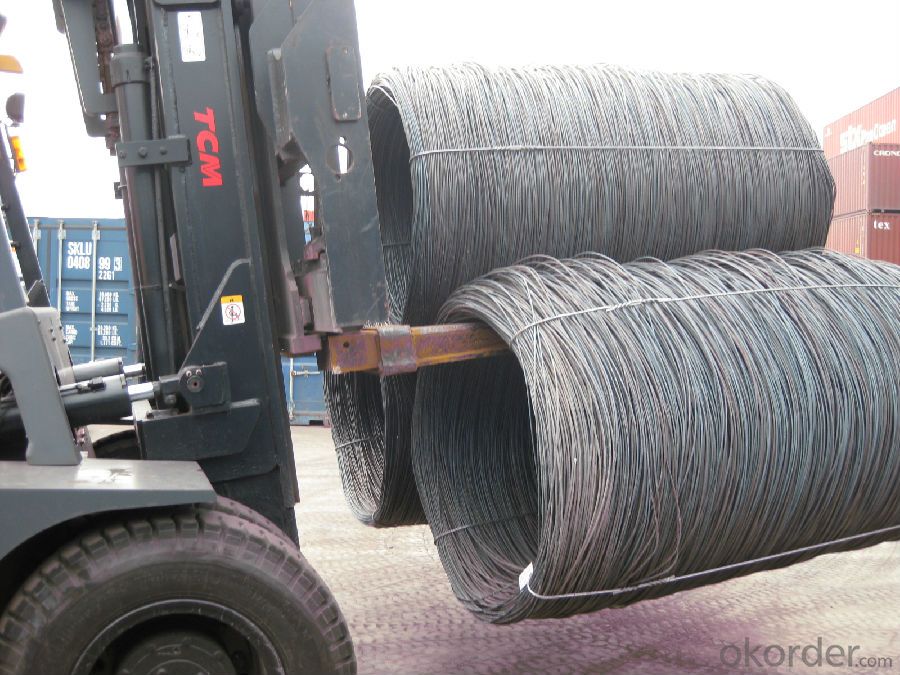
FAQ of SAE1006Cr Carbon Steel Wire Rod 7.5mm for Welding:
Q1: Why buy Materials & Equipment from OKorder.com?
A1: All products offered byOKorder.com are carefully selected from China's most reliable manufacturing enterprises. Through its ISO certifications, OKorder.com adheres to the highest standards and a commitment to supply chain safety and customer satisfaction.
Q2: How do we guarantee the quality of our products?
A2: We have established an advanced quality management system which conducts strict quality tests at every step, from raw materials to the final product. At the same time, we provide extensive follow-up service assurances as required.
Q3: How soon can we receive the product after purchase?
A3: Within three days of placing an order, we will begin production. The specific shipping date is dependent upon international and government factors, but is typically 7 to 10 workdays.
Q4: What makes stainless steel stainless?
A4: Stainless steel must contain at least 10.5 % chromium. It is this element that reacts with the oxygen in the air to form a complex chrome-oxide surface layer that is invisible but strong enough to prevent further oxygen from "staining" (rusting) the surface. Higher levels of chromium and the addition of other alloying elements such as nickel and molybdenum enhance this surface layer and improve the corrosion resistance of the stainless material.
Q5: Can stainless steel rust?
A5: Stainless does not "rust" as you think of regular steel rusting with a red oxide on the surface that flakes off. If you see red rust it is probably due to some iron particles that have contaminated the surface of the stainless steel and it is these iron particles that are rusting. Look at the source of the rusting and see if you can remove it from the surface.
- Q:How does steel wire rod behave under different temperature conditions?
- Steel wire rod exhibits varying behavior depending on the temperature it is exposed to. When subjected to lower temperatures, the steel wire rod tends to become more fragile and susceptible to fractures. This is primarily because the cold temperatures cause the metal to contract, reducing its ability to stretch and making it more susceptible to breaking under stress. Conversely, when exposed to higher temperatures, the steel wire rod becomes more pliable and easier to bend or shape. This is a result of the metal expanding as it heats up, which increases its ability to stretch and allows it to endure greater deformation without fracturing. Nonetheless, it is essential to recognize that extreme temperatures can have adverse effects on the steel wire rod. In extremely low temperatures, such as those encountered in cryogenic environments, the steel may undergo a phase transformation referred to as the ductile to brittle transition, where it becomes exceedingly brittle and prone to abrupt failure. Likewise, at extremely high temperatures, the steel wire rod may experience a loss of strength and integrity, as the elevated temperatures can cause the metal to soften and deform. The precise temperature at which this phenomenon occurs depends on the specific type of steel and its composition. To summarize, the behavior of steel wire rod is influenced by the ambient temperature. It becomes more fragile and susceptible to fractures at lower temperatures, while it becomes more pliable and easier to shape at higher temperatures. However, extreme temperatures can have detrimental effects on the steel's properties, leading to brittleness at low temperatures and a loss of strength at high temperatures.
- Q:How is steel wire rod used in the manufacturing of wire for mesh used in agriculture?
- Steel wire rod is an essential component in the manufacturing of wire for mesh used in agriculture. It serves as the raw material that is processed and transformed into wires of various gauges and thicknesses. These wires are then woven or welded together to create sturdy and durable mesh panels or fences. The steel wire rod's high tensile strength and corrosion resistance make it ideal for withstanding the harsh environmental conditions and heavy-duty applications commonly encountered in agricultural settings.
- Q:What are the main factors influencing the choice of steel wire rod surface finish?
- The choice of steel wire rod surface finish is influenced by several factors, each of which plays a significant role in determining the appropriate finish for a particular application. One of the main factors is the intended use of the wire rod. Different surface finishes offer varying levels of corrosion resistance, lubricity, and adhesion properties, which are crucial considerations in determining the suitability of the wire rod for a specific application. For example, a wire rod used in a corrosive environment may require a surface finish that provides enhanced resistance to rust and oxidation. Another factor influencing the choice of surface finish is the desired aesthetic appearance. Certain industries, such as automotive or consumer goods, may have specific requirements for the visual appeal of the wire rod. In such cases, finishes that offer a smooth, polished, or decorative appearance may be preferred. The mechanical properties required for the wire rod's application also play a role in determining the surface finish. Some finishes, such as a bright or polished surface, can improve the wire rod's yield strength, ductility, and fatigue resistance. These properties are vital in applications that involve high-stress conditions or require flexibility and durability. Cost considerations also come into play when selecting the surface finish. Some finishes require additional processing steps, such as pickling, coating, or electroplating, which can increase the overall cost of the wire rod. Therefore, it is essential to balance the desired surface finish with the cost-effectiveness of the manufacturing process. Lastly, environmental and regulatory factors can influence the choice of surface finish. Certain finishes may contain hazardous substances or require specific disposal methods, which can impact the environmental footprint of the wire rod production. Compliance with industry standards and regulations is crucial to ensure the safety and sustainability of the finished product. In conclusion, the choice of steel wire rod surface finish is influenced by factors such as intended use, aesthetic requirements, mechanical properties, cost considerations, and environmental considerations. By carefully considering these factors, manufacturers can select the most appropriate surface finish that aligns with the specific requirements of the application and ensures the optimal performance and quality of the wire rod.
- Q:What are the common production processes for vanadium-coated steel wire rod?
- The common production processes for vanadium-coated steel wire rod include melting and refining the steel, casting it into billets or ingots, hot rolling the billets into wire rod coils, pickling and cleaning the coils, applying a vanadium coating through either a galvanizing or electroplating process, and finally, cooling, inspecting, and packaging the vanadium-coated steel wire rod for distribution.
- Q:How is steel wire rod tested for hardness?
- Steel wire rod is typically tested for hardness using a method called Rockwell hardness testing. This involves measuring the depth of penetration of a diamond cone or steel ball into the surface of the wire rod under a specified load. The resulting hardness value indicates the material's resistance to indentation and helps determine its suitability for various applications.
- Q:How is steel wire rod used in the manufacturing of wire forms for automotive cooling systems?
- Due to its excellent strength and durability properties, steel wire rod is commonly utilized in the production of wire forms for automotive cooling systems. These wire forms are crucial components that provide structural support and help maintain the desired shape and functionality of various cooling system parts. One notable application of steel wire rod in automotive cooling systems is seen in the manufacturing of radiator cores. Radiator cores consist of a network of small tubes and fins that efficiently transfer heat from the engine coolant to the surrounding air. These tubes and fins are often connected and supported by wire forms made from steel wire rod. Steel wire rod is chosen for this purpose due to its high tensile strength, enabling the wire forms to withstand the pressure and vibration experienced in automotive cooling systems. Additionally, steel wire rod exhibits excellent resistance to corrosion, ensuring the wire forms' longevity and reliability even in harsh operating conditions. In the manufacturing process, steel wire rod is initially shaped using specialized machinery. Subsequently, the wire undergoes various heat treatment procedures to enhance its strength and flexibility. Once the wire forms are fabricated, they are integrated into the radiator core assembly, providing support and stability to the tubes and fins. Furthermore, steel wire rod finds use in the production of other wire forms such as hose clamps, brackets, and hooks in automotive cooling systems. These wire forms play vital roles in securing hoses, connecting components, and providing structural support to ensure the proper functioning of the cooling system. Overall, steel wire rod is an indispensable material in the manufacturing of wire forms for automotive cooling systems. Its strength, durability, and corrosion resistance make it an ideal choice for supporting and maintaining the integrity of various cooling system components, ultimately contributing to the efficient operation of the automotive cooling system.
- Q:What are the main factors affecting the thermal conductivity of steel wire rod?
- The main factors affecting the thermal conductivity of steel wire rod are the composition of the steel, the microstructure of the wire rod, its temperature, and any impurities or defects present in the material.
- Q:How is the decarburization of steel wire rod evaluated?
- The decarburization of steel wire rod is typically evaluated by conducting various tests such as microscopic examination, hardness testing, and chemical analysis to determine the depth and extent of carbon depletion on the surface of the rod.
- Q:How is steel wire rod used in the manufacturing of wire for heating elements?
- Steel wire rod is an essential component in the manufacturing of wire for heating elements. It serves as the primary raw material used to create the wire that forms the heating element. The process starts with high-quality steel wire rod that is carefully selected based on its specific properties and characteristics. This rod is then subjected to a series of manufacturing processes to transform it into wire suitable for heating elements. First, the steel wire rod is carefully drawn through a series of dies to reduce its diameter. This drawing process helps to refine the wire and achieve the desired diameter and uniformity. It also improves the mechanical properties of the wire, ensuring it can withstand the high temperatures and stresses that heating elements are subjected to. Next, the wire is typically subject to annealing, which involves heating it to high temperatures and then slowly cooling it. This process helps to relieve any internal stresses in the wire and improve its ductility, making it easier to work with during the subsequent steps of manufacturing. Once the wire has been drawn and annealed, it is further processed to add any necessary coatings or surface treatments. These coatings can provide additional protection against corrosion, enhance the wire's electrical conductivity, or improve its heat resistance, depending on the specific requirements of the heating element. Finally, the wire is spooled onto large reels, ready to be used in the manufacturing of heating elements. These spools of wire can then be further processed and shaped to create the specific design required for the heating element, whether it be a coil, ribbon, or other form. Overall, steel wire rod plays a crucial role in the manufacturing of wire for heating elements. It serves as the foundation for creating the wire that will ultimately generate heat in a wide range of applications, from household appliances to industrial equipment. Its high-quality properties, combined with the careful manufacturing processes it undergoes, ensure that the wire meets the strict requirements for performance, durability, and safety in heating element applications.
- Q:How is steel wire rod classified based on carbon content?
- Steel wire rod is classified based on its carbon content into three categories: low carbon steel wire rod, medium carbon steel wire rod, and high carbon steel wire rod.
1. Manufacturer Overview |
|
|---|---|
| Location | |
| Year Established | |
| Annual Output Value | |
| Main Markets | |
| Company Certifications | |
2. Manufacturer Certificates |
|
|---|---|
| a) Certification Name | |
| Range | |
| Reference | |
| Validity Period | |
3. Manufacturer Capability |
|
|---|---|
| a)Trade Capacity | |
| Nearest Port | |
| Export Percentage | |
| No.of Employees in Trade Department | |
| Language Spoken: | |
| b)Factory Information | |
| Factory Size: | |
| No. of Production Lines | |
| Contract Manufacturing | |
| Product Price Range | |
Send your message to us
SAE1006Cr Carbon Steel Wire Rod 7.5mm for Welding
- Loading Port:
- Shanghai
- Payment Terms:
- TT OR LC
- Min Order Qty:
- 100 m.t
- Supply Capability:
- 30000 m.t/month
OKorder Service Pledge
OKorder Financial Service
Similar products
New products
Hot products
Related keywords
